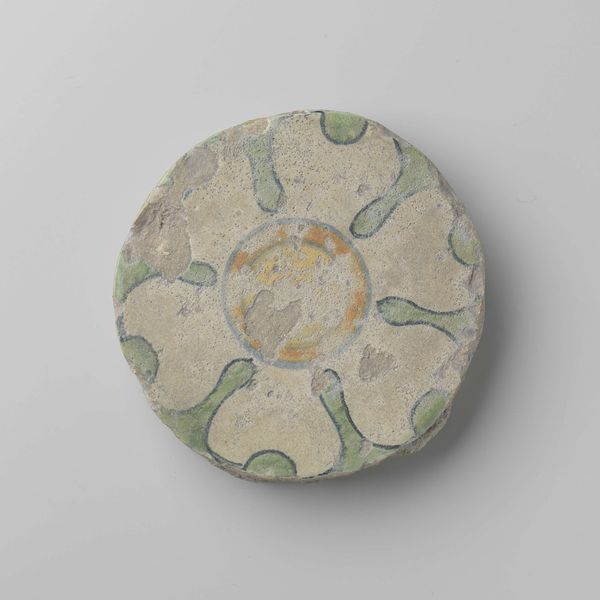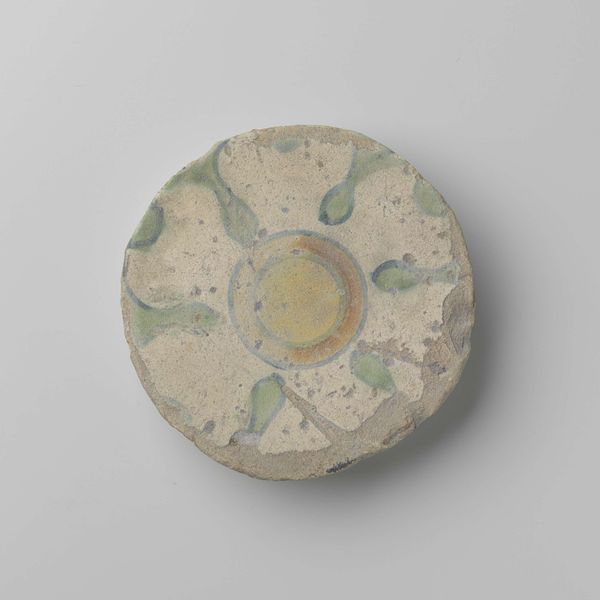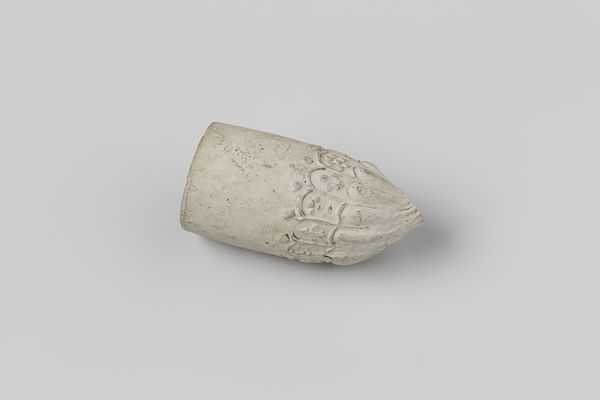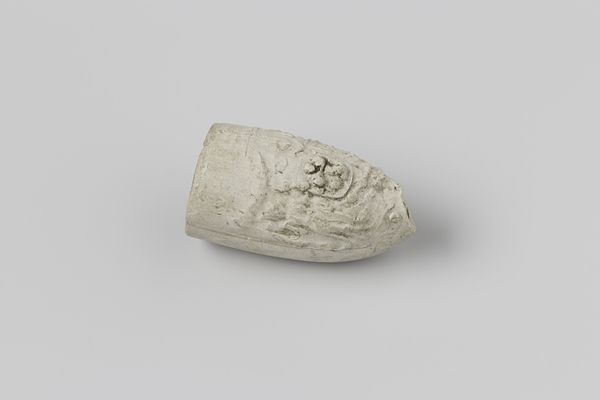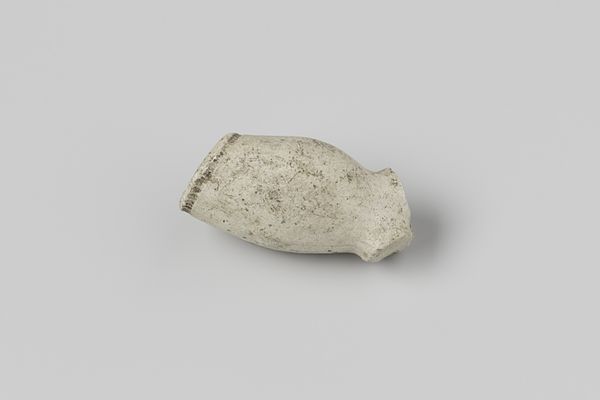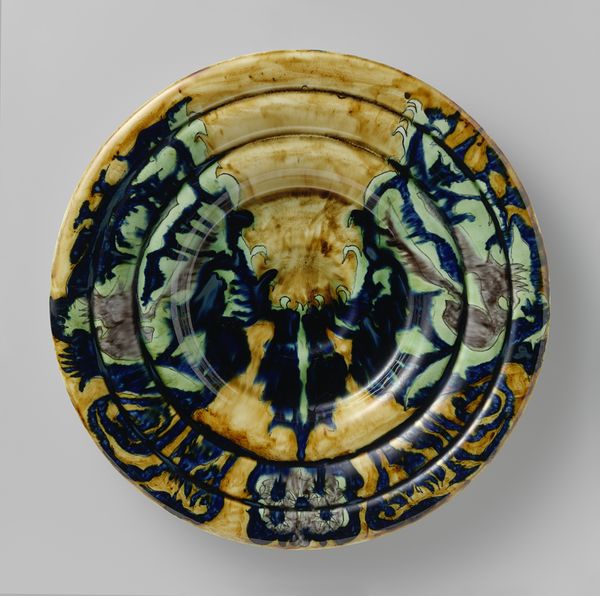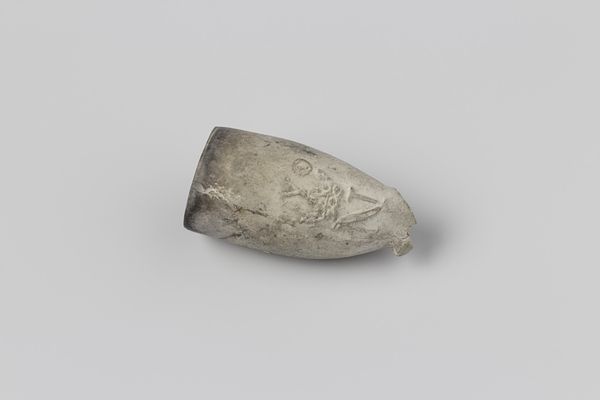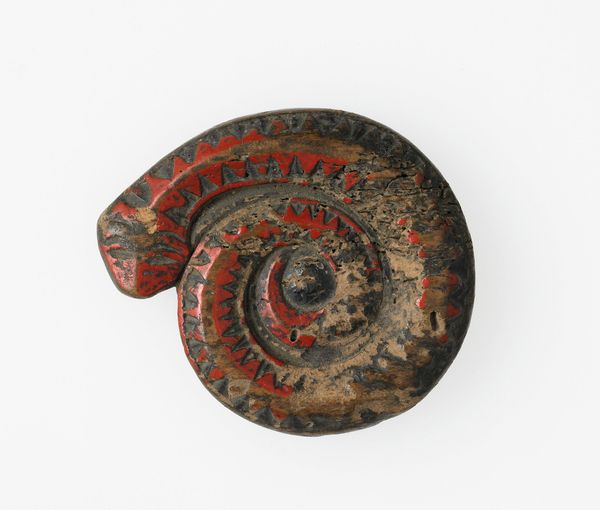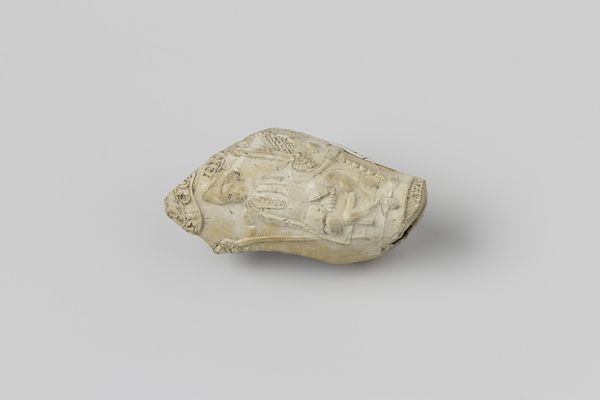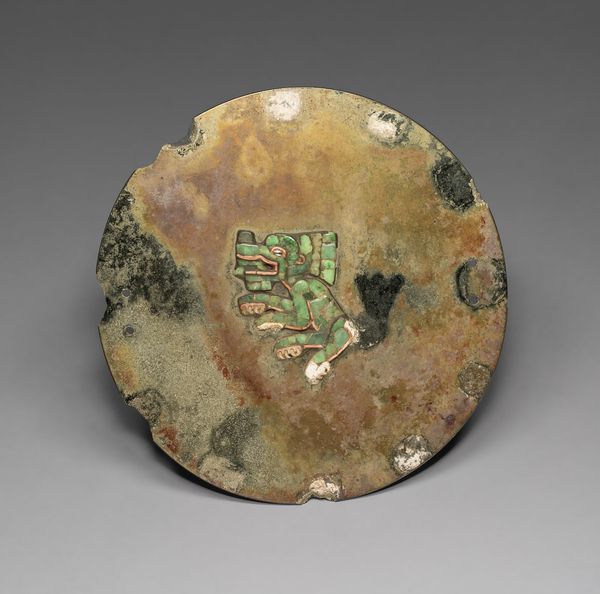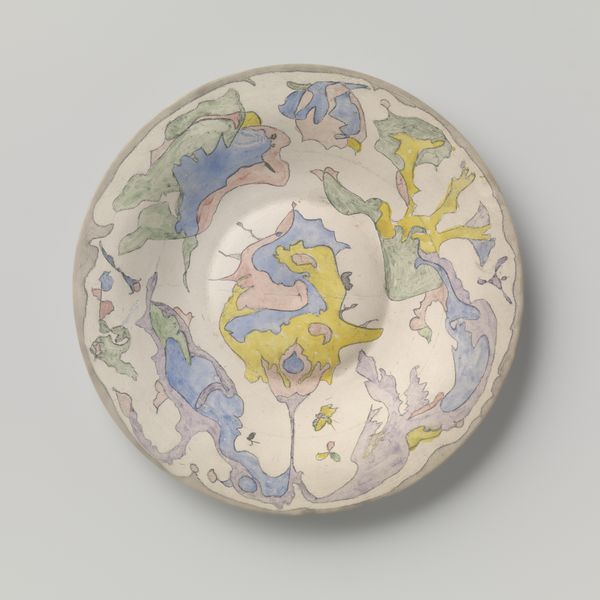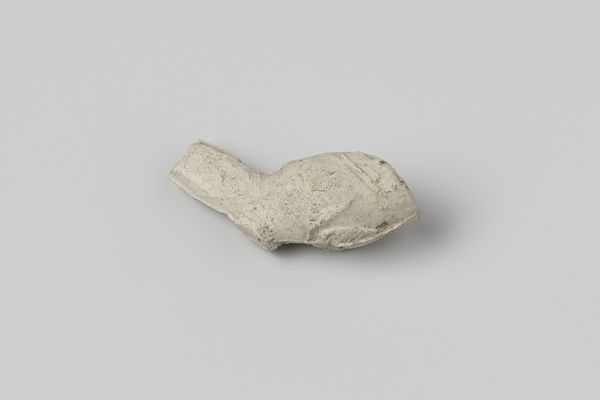
ceramic, earthenware
#
medieval
#
pottery
#
ceramic
#
earthenware
#
stoneware
#
geometric
#
ceramic
Dimensions: height 6 cm, width 8 cm, thickness 1.5 cm
Copyright: Rijks Museum: Open Domain
Editor: Here we have a tile fragment, titled "Tile from the Castle of Breda," dating from about 1500 to 1550. It’s earthenware, so rather humble material-wise, but still quite charming with its floral design. What do you make of its symbolism? Curator: This tile, though fragmented, speaks volumes about cultural memory. The circular motif in the center, ringed by what appears to be stylized foliage, evokes the sun or a blossom – perennial symbols of life, renewal, and even divinity. Given its origin in a castle, the symbolism may have been intentionally optimistic or representative of an aristocratic identity linked to nature and the flourishing of their estate. Editor: So, it's not just decoration but perhaps a statement of power and prosperity? Curator: Exactly! Visual symbols are rarely neutral; they reflect the desires and anxieties of the cultures that create and use them. Consider the placement within the castle: Was it in a public space, reinforcing status, or a private area, offering a sense of comfort and continuity? Each location amplifies the potential meanings. Editor: It makes me wonder what the full tile pattern looked like, and how the colors played out across the entire surface. Curator: Indeed. Reconstruction, even in the mind’s eye, is a vital part of understanding art, and how symbols accrue power across different eras. By engaging with its symbolism, we begin to appreciate cultural values, their continuity, and their dynamic ability to reshape our experience. Editor: This makes me look at everyday objects very differently. Now, I’ll consider the tile, even fragmented, holding its own stories through images. Curator: And in those stories, we rediscover our own connection to the past, reinterpreted in our present.
Comments
No comments
Be the first to comment and join the conversation on the ultimate creative platform.
